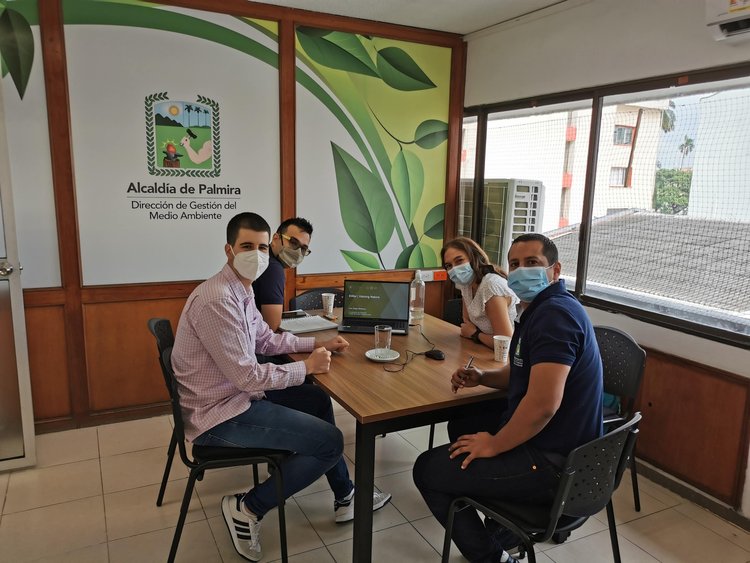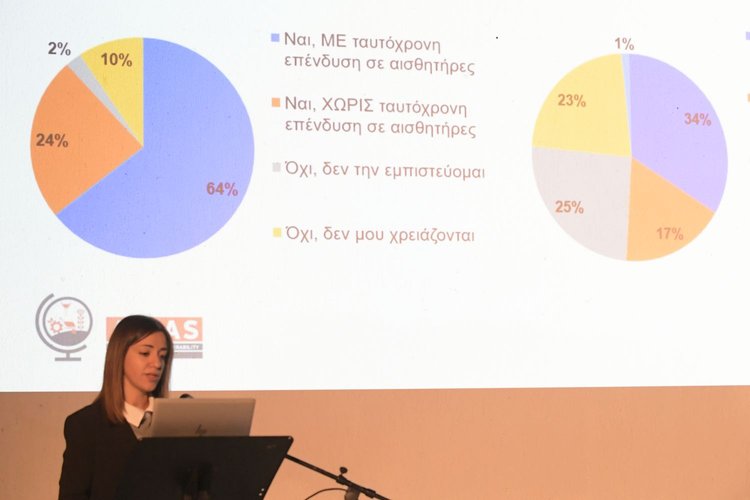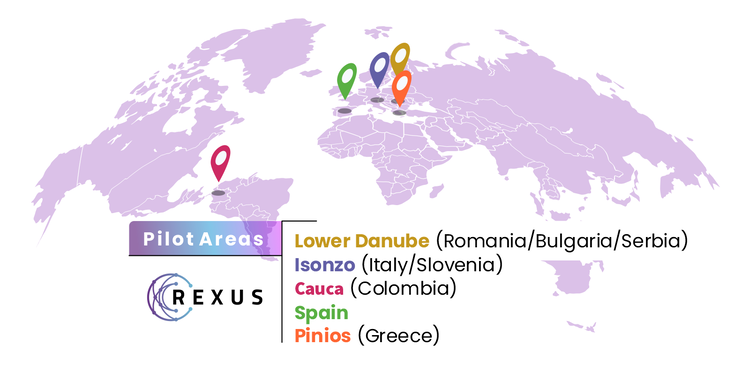Why is stakeholder engagement a crucial ingredient for the success of Horizon projects, and in particular those that focus on the Water-Energy-Food Nexus? What is the secret to ‘getting it right’? And what are some common myths and pitfalls to be avoided? We hear from ICatalist, a consultancy specialized in climate change adaptation and sustainability, and REXUS partner leading the Work Package on Learning and Action Alliances. Interviewed by Global Water Partnership – Mediterranean, REXUS communication and dissemination leader.

Q. How important is Stakeholder Engagement for Water-Energy-Food-Climate Nexus analysis and the REXUS project in particular?
A. The challenge from a Nexus viewpoint is to develop a comprehensive Water-Energy-Food-Climate analysis that can enable integrated planning across sectoral boundaries. Most importantly, the REXUS project does not just aim to collect data and establish scientific projections through advanced modeling; this is only a means to the end goal, which is to forge a path for action and change, in response to local challenges. In other words, we aim to help develop Nexus Thinking, and crucially, assist the shift from Nexus Thinking to Nexus Doing. In this endeavor, engaging and empowering stakeholders, the actual agents of the system under study, is the key to bringing about change. At the most basic level, stakeholders, the people who make up and run the ‘system’, must jointly define their challenges and goals, and co-develop new potential pathways, by integrating scientific results and their implicit day-to-day knowledge. Only then can they make informed choices about their future.

Q. Nearly all Horizon and other EU projects place a strong emphasis on stakeholder engagement, but this is not always effective. Is there a secret to impactful stakeholder engagement?
A. The guiding principle is really quite simple, but sometimes difficult to implement: stakeholder engagement needs to be built on a two-way, mutually beneficial relationship. Stakeholders are not just a ‘a check box to be ticked’, nor are they an audience which the project must simply inform. There must be a balanced give-and-take relationship between the project and stakeholders. It is important when planning for stakeholder engagement to first ask a few key questions:
- Are you speaking the same language? The language of scientists, which encapsulates scientific concepts, is different to that of policymakers; no matter how powerful a scientific concept may be, it needs to be ‘translated’ to become intuitively understandable by stakeholders, in terms of the actual language they use and the dilemmas they face. And the reverse is equally important: scientists need to need to have the concepts of the policy-makers ‘translated’ for them, to make sure they understand the policy agenda and produce science that is understandable and relevant.

- Are you establishing common goals? You need to consider and communicate to stakeholders what is the purpose of their engagement, and how much will be required from each stakeholder. Also, what will they get in return, and when will they get it? Will we provide them with data they need in their day-to-day decision making? Are we offering networking connections, helping to build communication bridges across departments and sectors that will make their work easier? To build trust with stakeholders, it is crucial to clarify how their involvement will result in the development of better tools for them to use in their work.
- Are we offering stakeholders an active role in the project? Informing stakeholders about research outcomes, goals, tools, is not equivalent to engaging them. Are stakeholders’ voices being heard, with a chance to influence the direction of the project? It is of paramount importance that our goals for measuring the project’s success are aligned with the needs of stakeholders.
- Do we have a common timescale for results? While scientists may choose a research path that can take very long and end up suggesting more research is needed, decision-makers may require concrete and quick answers that point to the road ahead and the costs of following it. Also, how can we help establish a longer-term perspective, but which is useful and relevant from ‘day 1’ for stakeholders?

Q. Can you point out some pitfalls to avoid when it comes to the actual implementation of the engagement strategy?
A. Let’s look at 3 common myths worth looking out for:
- “The greater the number of more stakeholders we engage, the better”: Not always so. We need to be focused and mindful of the stakeholder mix and dynamics: we need stakeholders with a high level of interest and a corresponding capacity to influence an issue; and we also need to engage with stakeholders that might appear less interested, but can be drawn in by the group’s dynamic and be motivated to use their capacity to influence outcomes. Lacking focus in building the stakeholder coalition may lead to processes getting bogged down and stakeholders feeling that their participation is leading nowhere.
- “Stakeholders, as insiders, are the best data providers”: Not necessarily. While stakeholders may happen to also be scientists providing reliable data, very often this will not be the case. Therefore, it is important to separate and not treat the groups as identical, because this may compromise the data collected, and may also put pressure to provide data on groups which in any case are ill-equipped to do so.
- “The more frequently we engage with stakeholders, the closer they will feel to the project.” It’s just not true. It’s more about the quality, rather than the quantity of interaction. Engagement needs to be targeted, and with clear aims and results. Otherwise, we may get ‘stakeholder fatigue’, which occurs when stakeholders are approached, often separately, through different components of a project, asked to take part in sessions or fill out questionnaires which may have overlapping aims, with no clear goal or end benefit to themselves. We must remember that the more stakeholders contribute their time and knowledge, the more they will expect in return from the project, so we always need to make sure that the relationship remains balanced.
Q. Let’s talk about good practices. How is REXUS approaching stakeholder engagement in its 5 pilots?
A. The REXUS stakeholder engagement strategy builds on three core ideas:
Co-creation: Stakeholders will take an active part in defining the challenges, the problems and the necessary pathways for change, based on their expertise and knowledge. The project will not define its own goals and impose its agenda on the stakeholders, rather it will create the means to support the process of change.
Cross-fertilisation: Networking and exchange of knowledge will be used to facilitate mutual learning between different stakeholders. In REXUS, this will be done systematic within each pilot, through the creation of Learning & Action Alliances; between the 5 pilots of the project; and finally, with other sister Nexus Projects. This will help us learn from what is working well in the different pilots, but importantly as well, what isn’t working so well.
Capacity building: We will seek out opportunities to enhance technical and institutional capacities, in order to establish a common language, and a joint level of capacity for between stakeholders for effective Nexus management.

Q. What else is new in the REXUS approach to stakeholder engagement?
A. It is important to note that we also aim to support the development of System Thinking, ie going beyond one’s own exclusive tasks and understanding as a decision maker, and building communication channels with other stakeholders that are closely connected to the same problems one needs to address.
For REXUS partners in particular, there is also an important goal related with supporting greater transdisciplinarity. This is not just a group of scientists from different areas working together, ie a standard interdisciplinary approach, but scientists aiming to fuse their knowledge with a wide range of different types of knowledges and experiences brought along stakeholders, a lot of which does not fit within a standard scientific framework, but still carries invaluable information into the area’s reality. This will ultimately help to create an approach, grounded on science, that is down to earth and socially relevant.
Q. To conclude, what is the hallfmark of successful stakeholder engagement in a project?
A. A successful project in terms of stakeholder engagement is not just one that will hold inspiring training and participation sessions and exchanges, although these are important. It is one where, after all the engagement processes have borne fruit, the stakeholders will return to their daily routine of management, viewing some of their challenges in a new light, with new tools to address them, a new network of people to collaborate with, and with broadened options for making different, and better, decisions.

